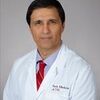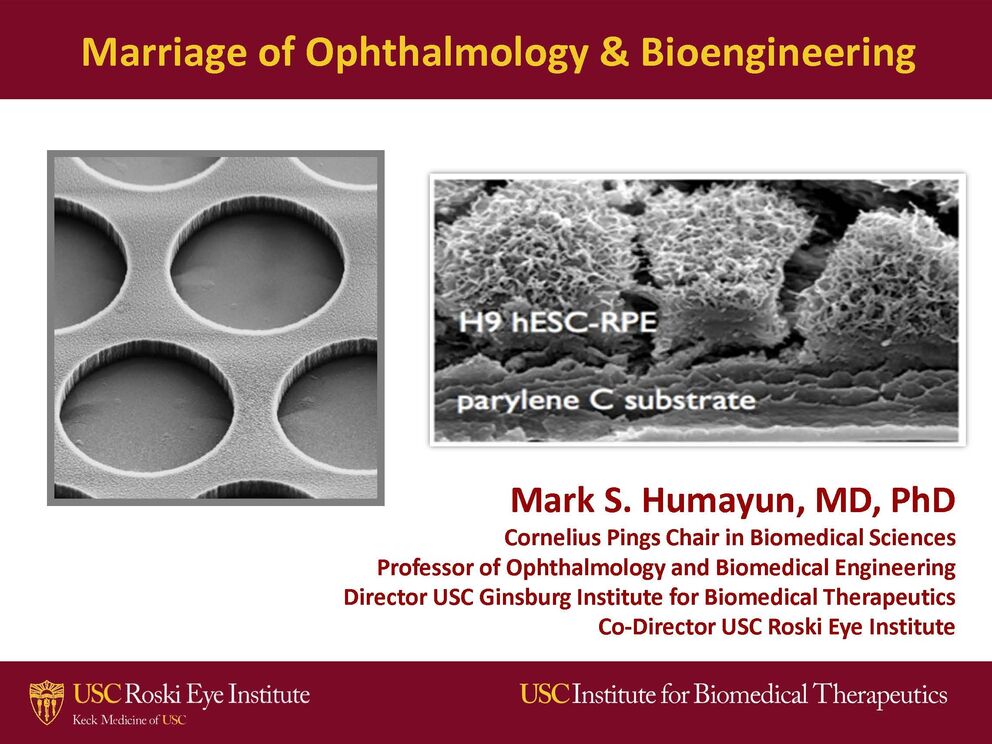Syllabus/Topics
- Objective: Macular Degeneration Therapy
- Leading cause of blindness
- 196 million people have macular degeneration, which is expected to be in 288 million by 2040.
- Global cost of $300 Billion ($255 Billion to direct health care costs)
- Description of eye and retina
- Age-Related Macular Degeneration (AMD)
- Affects central vision
- Dry-type (Atrophic) - present in 80 to 90% of the population
- Wet-type (Exudative - bleeding happens under retina) - present in 10 to 20% of the population
- Damaged Cones
- Types of stem cells used
- Pluripotent cell: Can give rise to most cell types
- Embryonic
- Induced Pluripotent
- Multipotent: Can give rise to a few cell types
- 1. Adult stem cells (fat, bone marrow), 2. Perinatal stem cells (amniotic fluid, umbilical cord fluid)
- Caution that stem cells from autologous fat has led to blindness when injected into eye of patients with AMC; risk of tumor formation and rejection
- Pluripotent cell: Can give rise to most cell types
- Study in Japan - Yamanaka Factors
- Stem Cell Suspension or Sheet?
- Various institutes are researching either suspension or sheet
- Stem cell-derived RPE Patch:
- Parylene C-Substrate was used because it was highly valuable in making of the patch
- Synthetic nonporous biomimetic membrane
- First in Human Studies
- FDA approval for Phase 1/2a clinical trial
- Funded through California Institute for Regenerative Medicine (CIRM)
- Animation of surgical procedure
- Conclusion: Stem cell derived RPE Implant can restore vision in patients with Geographic Atrophy by tropic and direct graft effect
- FDA approval for Phase 1/2a clinical trial
- Secretome Program:
- For people who are not ready for an implant but just starting to have a problem
- Process of Secretome Program
- Summary & Future Direction:
- Pluripotent stem cells in early clinical trials to address unmet need of blindness
- CPCB Team (Dr. Humayun’s team) conducted largest Phase 1 clinical trial of stem cell implant to data showing improvement in patients with AMD
- Future Direction:
- Starting Phase 2B trial
- Starting pre-IND effort to develop the Secretome
- Stem Cell Team
- Video testimonial of a patient with restored vision
- Questions
Acknowledgement
Accompanying text created by Roxy Terteryan, RKS Project Administrator, SC CTSI (atertery@usc.edu)

